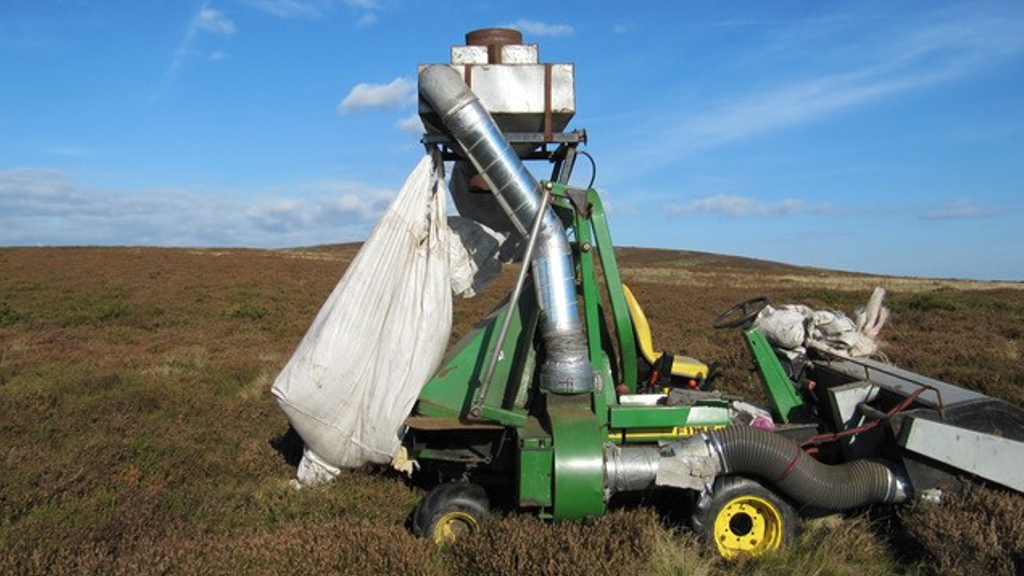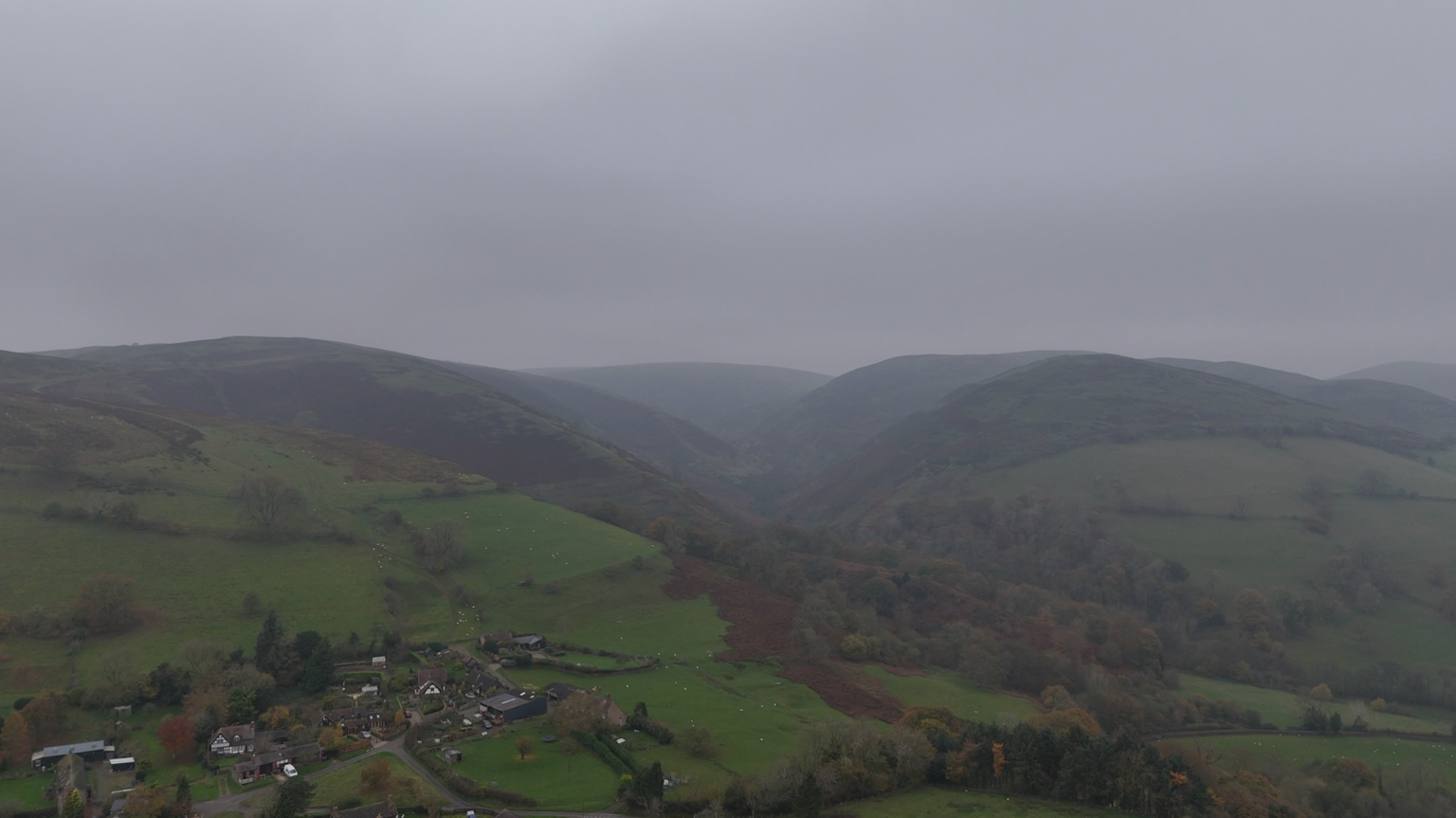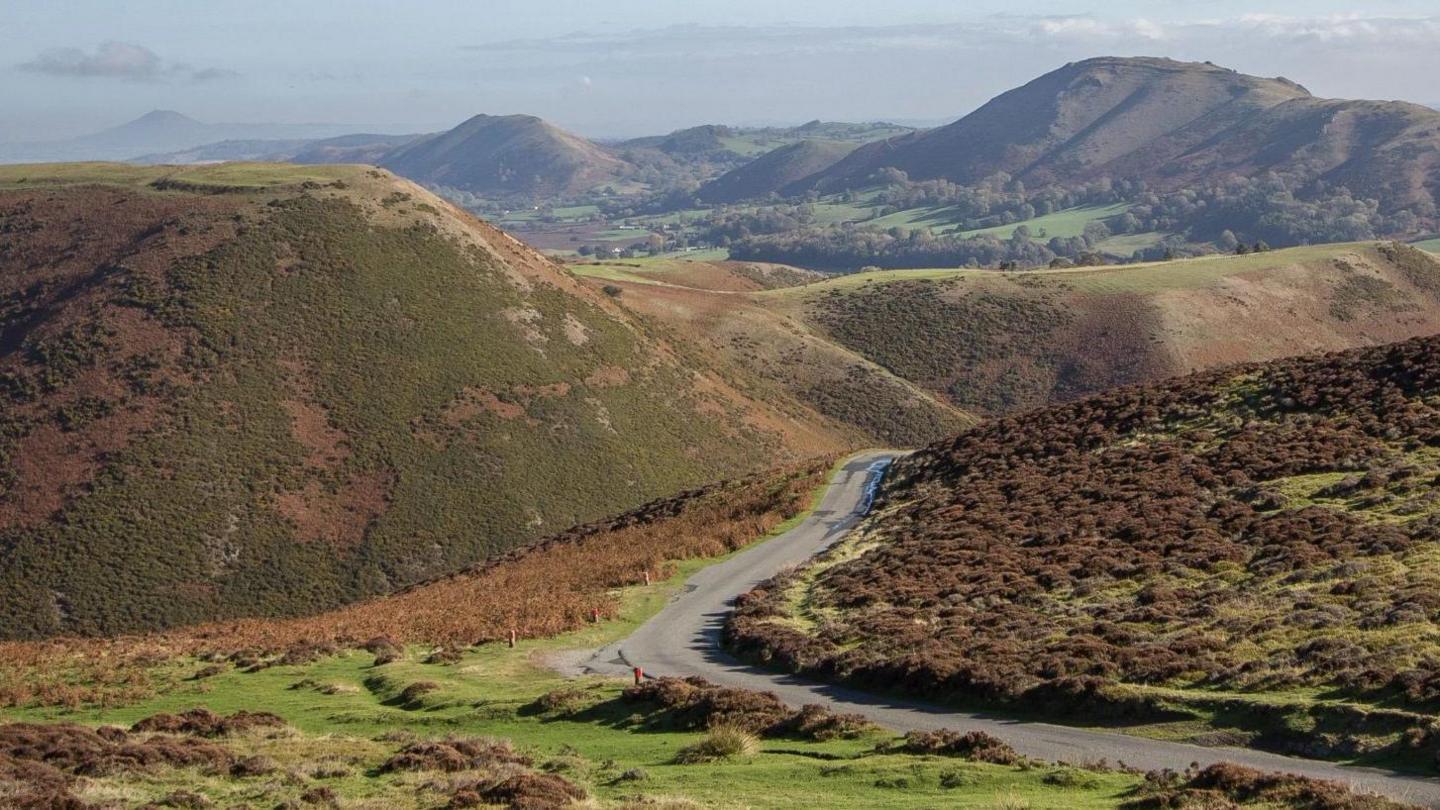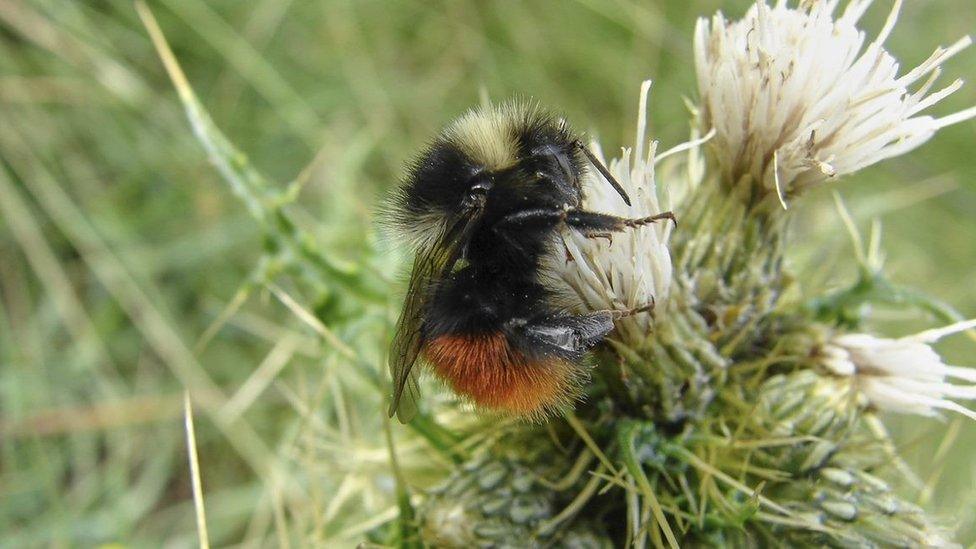Heather harvesting carried out without consent

The National Trust has been blamed for damaging heathland with its heather-harvesting
- Published
The National Trust broke conservation rules over a new method of harvesting heather at a Shropshire beauty spot, the BBC has learned.
The charity, which owns Long Mynd, near Church Stretton, has admitted carrying out trials of seed brush-harvesting last year, but mistakenly believed the process was covered by existing permissions from Natural England.
Farmers who hold commoner grazing rights told the BBC they were disgusted by damage they claim was caused to the heath-land.
Long Mynd is a protected Site of Special Scientific Interest (SSSI), and governed by strict conservation rules.
“It’s clear the damage here is severe and has been caused by harvesting heather seed. It’s going to take some years to recover,” said Tom Lloyd, secretary of the Longmynd Commoners’ Association.
He represents a group of sheep and beef farmers who exercise their right to graze animals on the slopes of the seven-mile long plateau.
Seed brush harvesting involves taking seeds from a species-rich donor site and spreading them on areas which need their wild flowers restoring.
Typically, a harvester is towed across the site and seed is brushed into a hopper and the seed is then dried.
This is meant to remove heather seed heads only, thus protecting the main part of the plant.
A site near the Shooting Box public car park, visited by the BBC, appears to have significant heather damage caused by heavy machinery, with signs that tractor wheels have become stuck in mud with piles of unearthed heather nearby.
“We’re really disappointed that National Trust - Europe’s largest conservation body - has felt able to severely damage one area in pursuit of regeneration of another,” says Mr Lloyd, a fourth-generation hill farmer.
“We need them to hold true to the collaborative management that Long Mynd has seen for over 25 years.”

Tom Lloyd said the damage had been 'severe'
In a statement, a National Trust spokesperson said: “We take our responsibility in caring for the Long Mynd seriously and understood we had permission to brush-harvest the heather seed as part of our existing heather management consent.
“Subsequently we were informed by Natural England this was not the case and have sought and secured additional consent.”
The charity also denied claims made by the LMCA (Longmynd Commoners’ Association) that patches of heather have been damaged by recent seed brush harvesting.
The spokesperson added: “No localised damage was caused to the heathland during the seed brush-harvesting trials. However, during cutting and baling works, with prior consent from Natural England, the severe wet weather meant the machinery used regrettably caused some localised damage to the heathland.
“We are working closely with Natural England to secure additional SSSI consent to repair and restore the damaged heathland.”

The National Trust said it was looking to repair damaged heathland
As part of conservation efforts, the National Trust has been transferring heather seed to its Dudmaston estate near Bridgnorth, where around 240 acres of arable land on Mose Farm are being restored to heath-land over a ten year period.
Brush-harvesting heather seeds is becoming increasingly popular, largely because it is cost effective and should not damage the land.
It is usually carried out by lightweight machinery as seeds are tiny and plentiful, making them difficult to harvest by hand. They can then be cleaned and heat or smoke treated to increase germination.
It is approaching the peak time of the year for ripening and, typically, Calluna Vulgaris (heather) can be collected in November, or early December.
Heather brash, as it is known, is only sourced from donor sites over 200m in altitude.
As Long Mynd is an official Site of Special Scientific Interest, external, rules state that landowners must apply for consent to Natural England before they "carry out planned activity on it or allow someone else to carry out a planned activity on it".

The Long Mynd has protection as a Site of Special Scientific Interest
A spokesperson for Natural England said it wrote to the National Trust in October this year, informing it that it "had conducted heather seed harvesting without the correct SSSI consent in place”.
“We are working with the National Trust to ensure that in future all necessary permissions are in place.”
Up to 75% of heather has been lost over the years at Long Mynd, according to the National Trust, due to a combination of summer drought and damage from the heather beetle.
The charity has carried out vegetation management for many years with full consent, including tackling bracken and gorse.
But the farmers are monitoring the management of heather more closely and say they expect better consultation.
Get in touch
Tell us which stories we should cover in Shropshire
Follow BBC Shropshire on BBC Sounds, Facebook, external, X, external and Instagram, external.
Related topics
More on the Long Mynd
- Published18 July 2024

- Published1 July 2022

- Published1 July 2023
